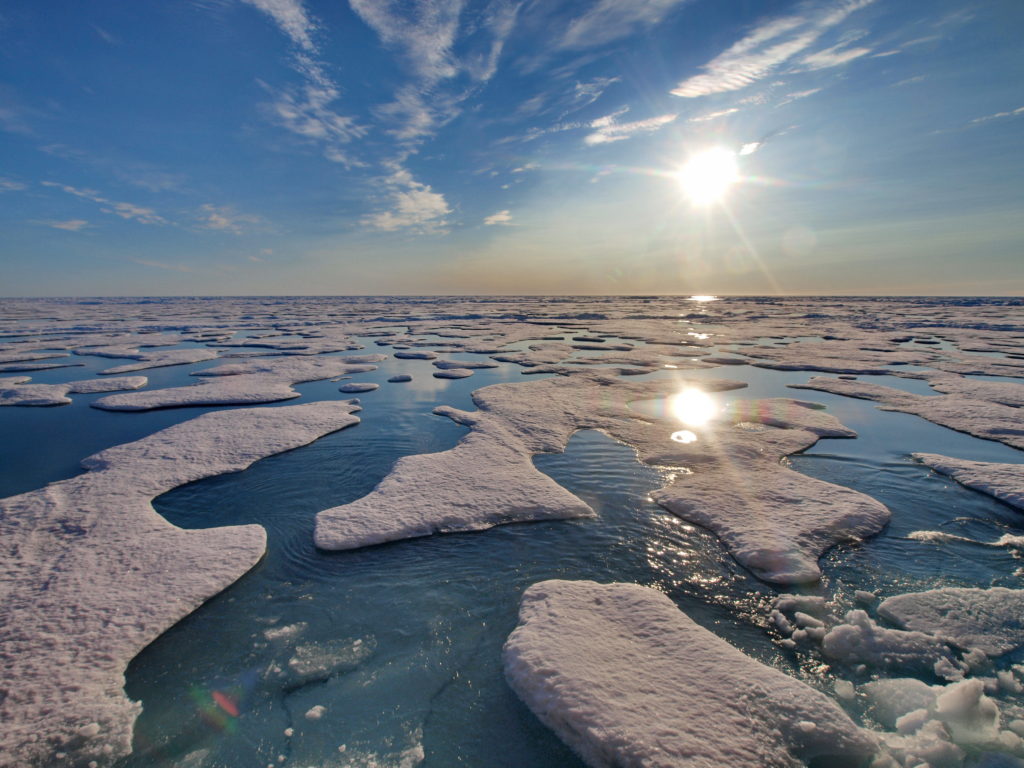The prospect of a seasonally ice-free Arctic Ocean is a matter of pressing environmental, economic and political concern, and so there is a strong need for
improved sea ice models with which to build reliable projections. CPOM maintains and improves the CICE numerical sea ice model, using our own sea ice observations to validate it. As well as advances in model physics, this has increased our ability to make seasonal and long-term forecasts of Arctic sea ice, as well as understanding past changes.
We play a leading role in national and international sea ice model development, including through the UK Sea Ice Group, and we make the CICE model and output available to the UK sea ice community, including core users at the Met Office, NOC, and BAS.
Our work includes integrating melt ponds in to the CICE model, which helps us to understand their impact on the state of the Arctic sea ice and its importance in making more accurate forecasts.
You can read about postgraduate researcher Naomi Smith’s work on sea ice modelling in this blog post.

Ponds of melted freshwater (snow) on top of sea ice in the Arctic in summer. Also note the haze in the distance; such haze is rare in the Arctic and appears here because of the relative proximity to land in combination with offshore winds. Credit: Michael Tjernström
